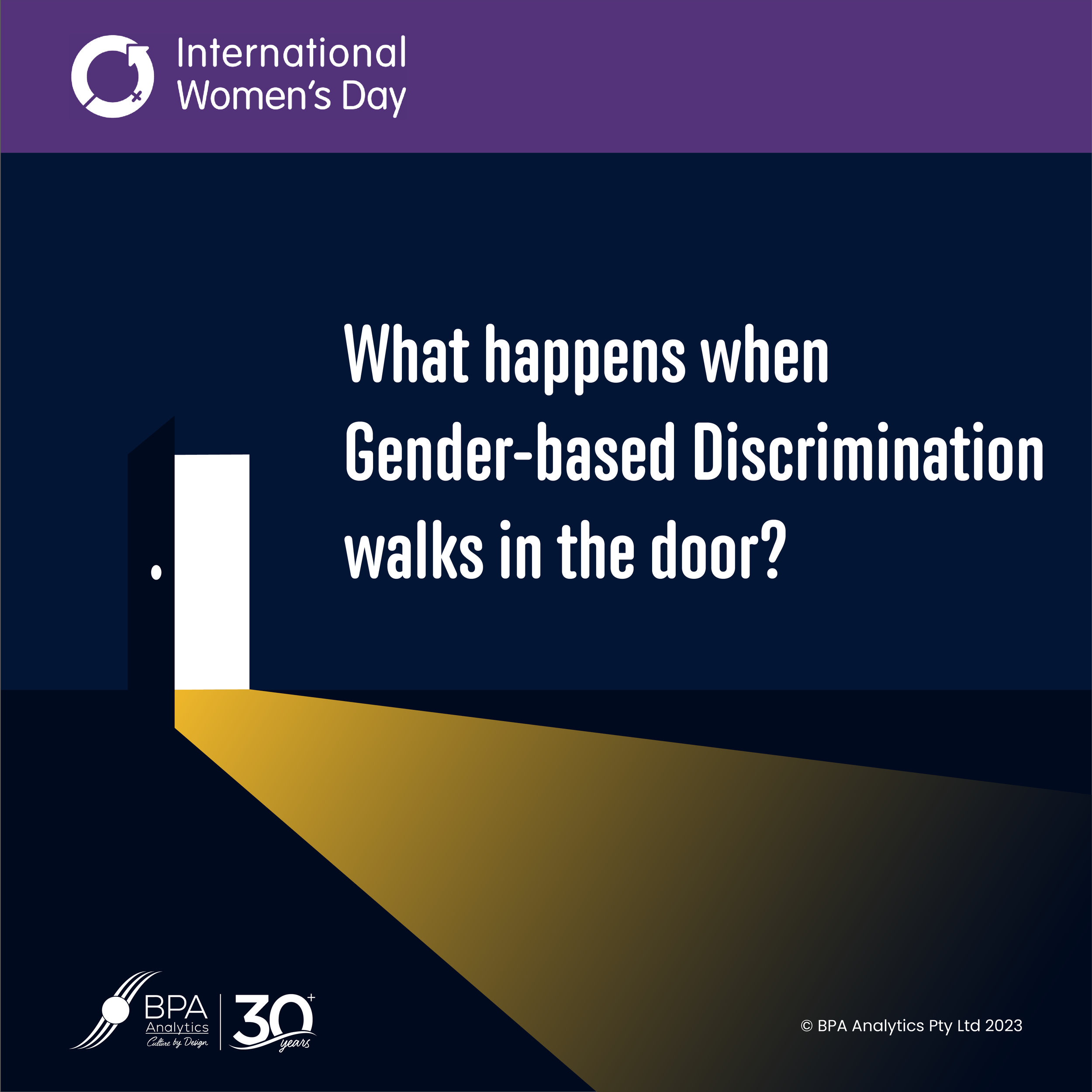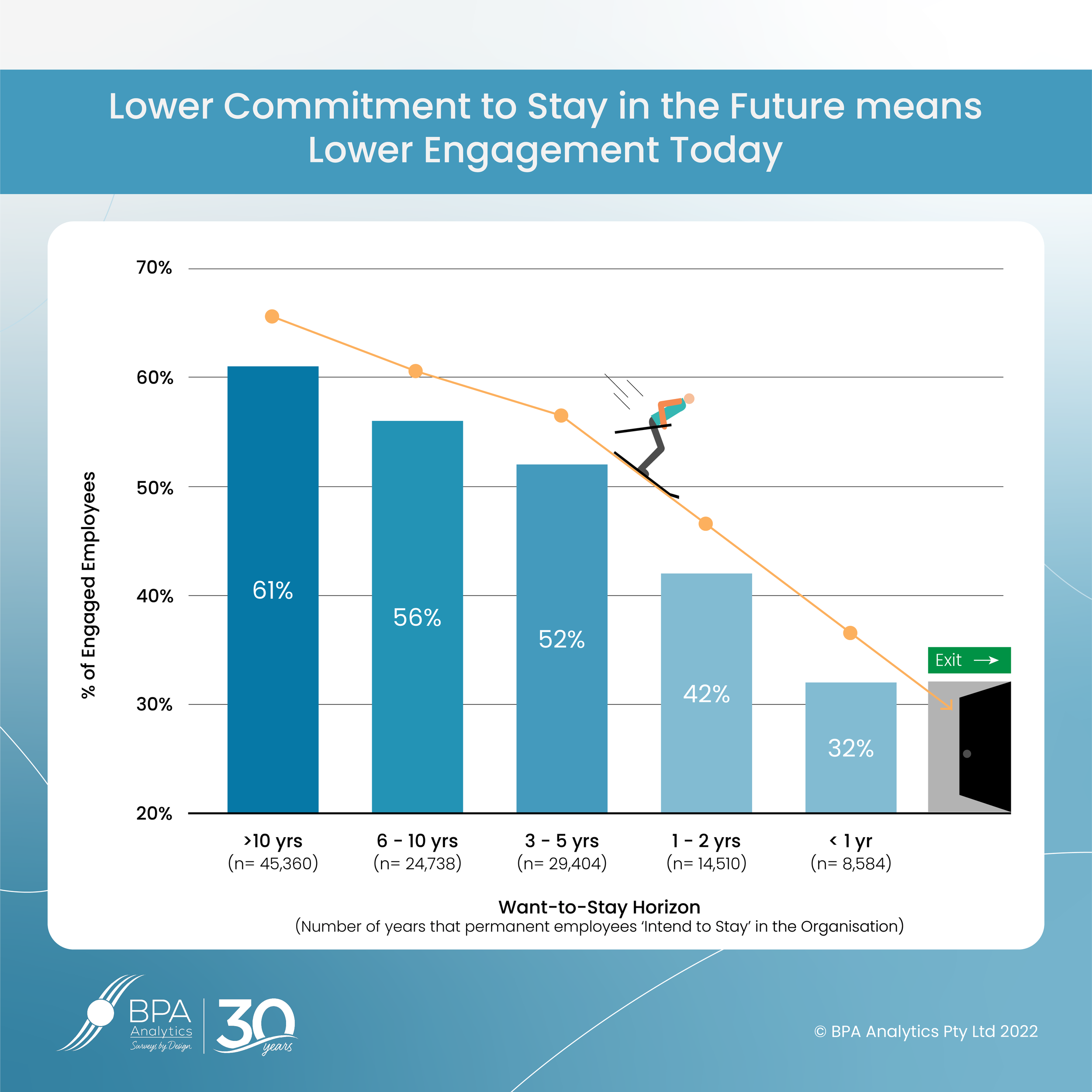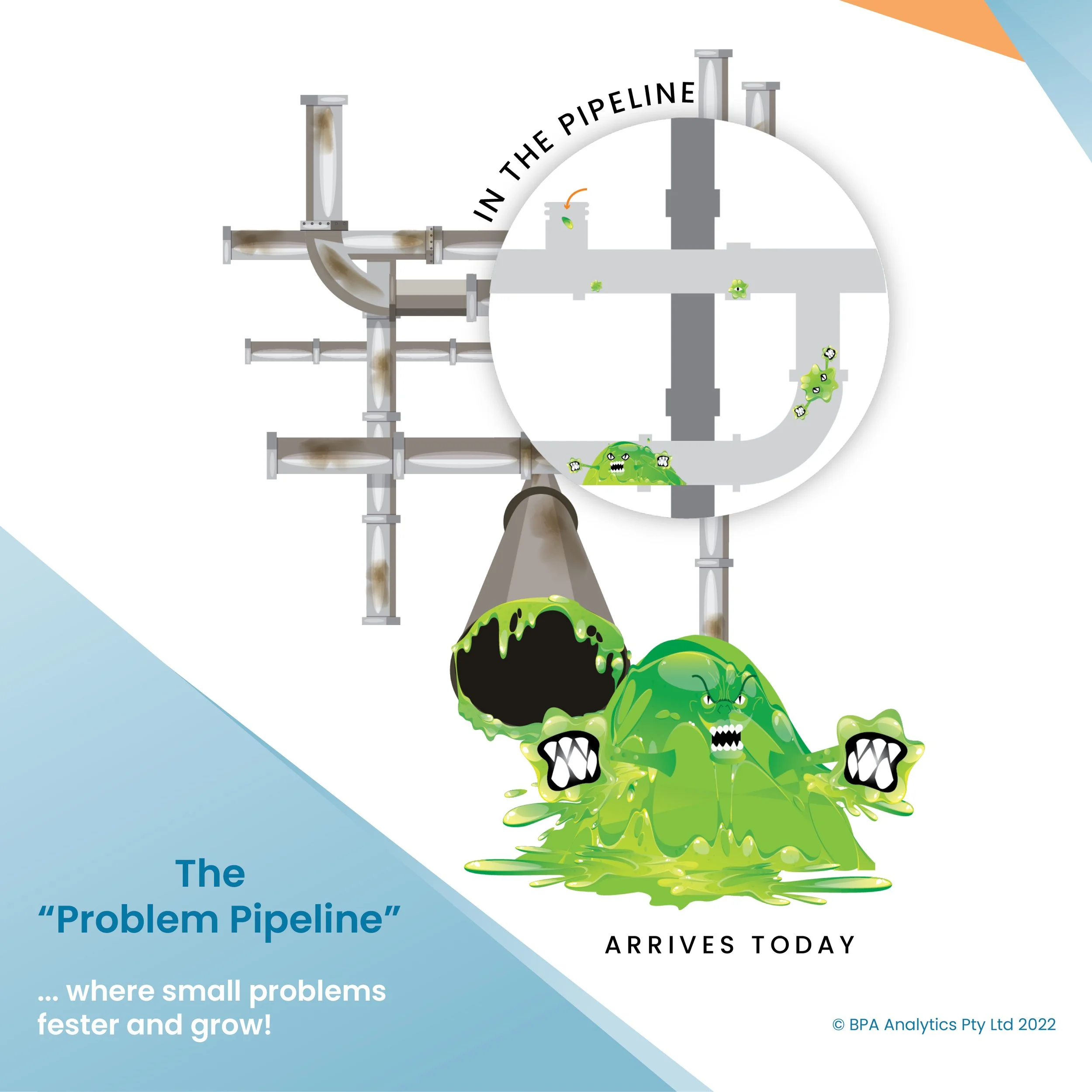Employee Engagement over the previous 10 years
/ BPA Analytics
In the ‘Pre-COVID’ years, BPA observed a consistent year-on-year increase in employee engagement that peaked between 2017 and 2019.
This remained steady in the early months of COVID.
Over the past 2 years alone, employee engagement scores have fallen steeply to below where they first began almost 10 years ago.
While COVID is the obvious trigger for this turning point, organisations now need to focus on managing the ongoing decline by understanding the drivers of employee engagement and turnover in their workplaces.
⇩ Click here to download a PDF version of this post
Related Posts:
…It’s something you grow and shape. This post will tell you how.
This Case Study is an interview with Dr Glenn Edwards, the Executive Director of ACT Pathology, conducted by Jacqui Parle, Director at BPA Analytics. This Case Study provides practical tips for leaders in bringing about Cultural Change, against a backdrop of significant external challenges.
This post highlights some of our statistics about the impact of Gender-based Discrimination on Employee Engagement & Turnover.
This discussion is about how easy it is to claim you can identify a driver of employee engagement when all you actually have is a pretty good correlation.
The employee NPS® is a measure of how much they would advocate for the organisation.
Increasing the ‘Want-to-Stay Horizon’ across your workforce means increased employee engagement in the here-and-now, plus better cost-benefit outcomes from your total workforce investment.
One concrete measure of Employee Commitment is the number of years an employee intends to stay with the organisation.
Employee Engagement is NOT like a Game of Chess! If employee engagement was like a game chess, then you would only have 2 sides …
The average level of employee engagement is a little under 50%. Inspirational organisations can get over 80%, but it means building on this checklist.
Employees are engaged with many aspects of their working lives – with their work colleagues, their managers, their clients, their communities, but also, their organisation overall.
Over the past 2 years alone, employee engagement scores have fallen steeply to below where they first began almost 10 years ago.
At the heart of the decline in employment engagement (and the increase in turnover) is “The Problem Pipeline”.












